
Nicaragua, officially the Republic of Nicaragua, is the geographically largest country in Central America, comprising 130,370 km2 (50,340 sq mi). With a population of 6,850,540 as of 2021, it is the third-most populous country in Central America after Guatemala and Honduras. Nicaragua is bordered by Honduras to the north, the Caribbean Sea to the east, Costa Rica to the south, and the Pacific Ocean and a shared maritime border with El Salvador to the west. The country's largest city and national capital is Managua, the fourth-largest city in Central America with a population of 1,055,247 as of 2020. Nicaragua's multiethnic population includes people of mestizo, indigenous, European, and African heritage. The country's most spoken language is Spanish, though indigenous tribes on the Mosquito Coast speak their own languages and English.
Nicaragua is a nation in Central America. It is located about midway between Mexico and Colombia, bordered by Honduras to the north and Costa Rica to the south. Nicaragua ranges from the Caribbean Sea on the nation's east coast, and the Pacific Ocean bordering the west. Nicaragua also possesses a series of islands and cays located in the Caribbean Sea.

The Sandinista National Liberation Front is a left-wing political party in Nicaragua. Its members are called Sandinistas in both English and Spanish. The party is named after Augusto César Sandino, who led the Nicaraguan resistance against the United States occupation of Nicaragua in the 1930s.

Managua is the capital and largest city of Nicaragua, and one of the largest cities in Central America. Located on the shores of Lake Managua, the city had an estimated population of 1,055,247 as of 2020, and a population of 1,401,687 in its metropolitan area. The city also serves as the seat of Managua Department.
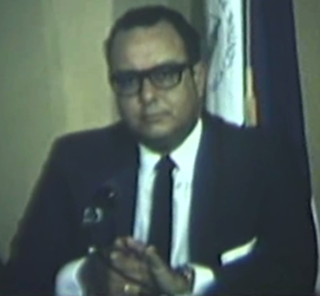
Anastasio "Tachito" Somoza Debayle was the 53rd President of Nicaragua from 1967 to 1972 and again from 1974 to 1979. As head of the National Guard, he was de facto ruler of the country between 1967 and 1979, even during the period when he was not the de jure ruler.

Anastasio Somoza García was the leader of Nicaragua from 1936 until his assassination in 1956. He was officially the 21st President of Nicaragua from 1 January 1937 to 1 May 1947 and from 21 May 1950 until his assassination on 29 September 1956, ruling for the rest of the time as an unelected military dictator. He was the patriarch of the Somoza family, which ruled Nicaragua as a family dictatorship for 42 years.

The Nicaraguan Revolution encompassed the rising opposition to the Somoza dictatorship in the 1960s and 1970s, the campaign led by the Sandinista National Liberation Front (FSLN) to oust the dictatorship in 1978–79, the subsequent efforts of the FSLN to govern Nicaragua from 1979 to 1990, and the Contra War, which was waged between the FSLN-led government of Nicaragua and the United States–backed Contras from 1981 to 1990. The revolution marked a significant period in the history of Nicaragua and revealed the country as one of the major proxy war battlegrounds of the Cold War, attracting much international attention.
Jinotega is the capital city of the Department of Jinotega in north-central Nicaragua.
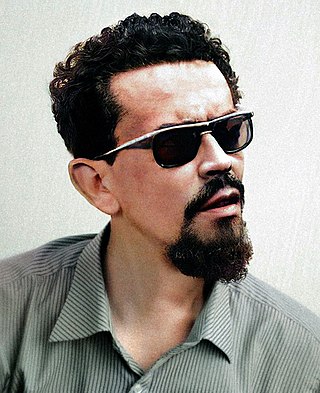
Carlos Fonseca Amador was a Nicaraguan teacher, librarian and revolutionary who founded the Sandinista National Liberation Front (FSLN). Fonseca was later killed in the mountains of the Zelaya Department, Nicaragua, three years before the FSLN took power.

Miguel Obando y Bravo, SDB was a Nicaraguan prelate of the Catholic Church. He was the Archbishop of Managua from 1970 to 2005. Pope John Paul II created him a cardinal in 1985.

Matagalpa is a city in Nicaragua which is the capital of the department of Matagalpa. The city has a population of 112,697, while the population of the department is 606,643. Matagalpa is Nicaragua's seventh largest city, the largest in the country's interior, and one of the most commercially active outside of Managua. Matagalpa is known as the "Pearl of the North" and "Land of Eternal Spring."

Nicaragua's economic history has shifted from concentration in gold, beef, and coffee to a mixed economy under the Sandinista government to an International Monetary Fund policy attempt in 1990.
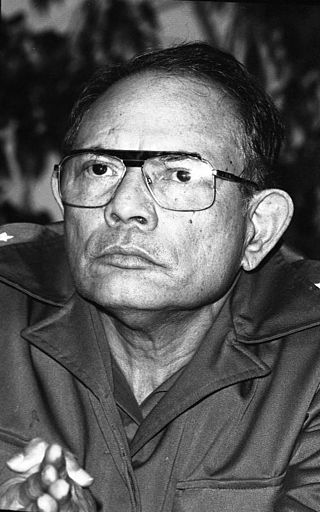
Tomás Borge Martínez, often spelled as Thomas Borge in American newspapers, was a cofounder of the Sandinista National Liberation Front in Nicaragua and was Interior Minister of Nicaragua during one of the administrations of Daniel Ortega. He was also a renowned statesman, writer, and politician. Tomás Borge also held the titles of "Vice-Secretary and President of the FSLN", member of the Nicaraguan Parliament and National Congress, and Ambassador to Peru. Considered a hardliner, he led the "prolonged people's war" tendency within the FSLN until his death.

Dora María Téllez Argüello is a Nicaraguan historian known for her involvement in the Nicaraguan Revolution. As a young university medical student in León in the 1970s, Téllez was recruited by the Sandinista National Liberation Front (FSLN). Téllez went on to become a comandante and fought alongside later president Daniel Ortega in the revolution that ousted dictator Anastasio Somoza Debayle in 1979. In the subsequent FSLN government, she served as Health Minister under Ortega and has also been an advocate for women's rights. She ultimately became a critic of repression and corruption under President Ortega and left the FSLN in 1995 to found the party Sandinista Renovation Movement (MRS), later renamed Unamos. Along with several other opposition figures, she was arrested in June 2021 by the Ortega government.
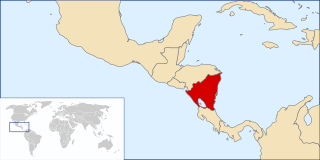
The following is an alphabetical list of topics related to Nicaragua.
Santa María de Ostuma was a Mountain Hotel built by Leo Salazar in 1936. It was located in the province of Matagalpa, Nicaragua and attended personally by its owners. The resort's fame spread, and many local and international tourists visited it for vacationing and ecotourism. It was confiscated by the Sandinista government and closed in 1983.
Jewish Nicaraguans or Nicaraguan Jews are Nicaraguans of Jewish ancestry who were born in or have immigrated to Nicaragua. They are part of the ethnic Jewish diaspora.
The Tuma River is a river located in Nicaragua. The length of the Tuma is 180 kilometres (110 mi).

The Cacaopera people also known as the Matagalpa or Ulúa., are an indigenous people in what is now El Salvador and Nicaragua.
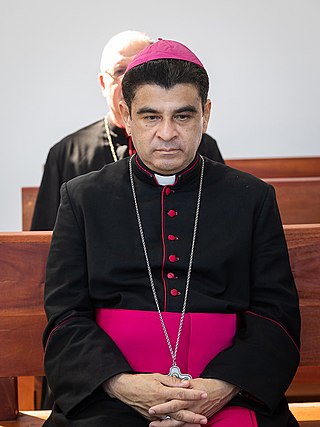
Rolando José Álvarez Lagos is a Nicaraguan prelate of the Catholic Church. He has served as the Bishop of Matagalpa since 2011 and apostolic administrator of Estelí since 2021. He is a longtime opponent of the Nicaraguan President Daniel Ortega. In February 2023, after being held under house arrest for six months, he refused to join a group of political prisoners released into U.S. custody and was sentenced for treason to 26 years in prison. He was exiled to Vatican City in January 2024.














